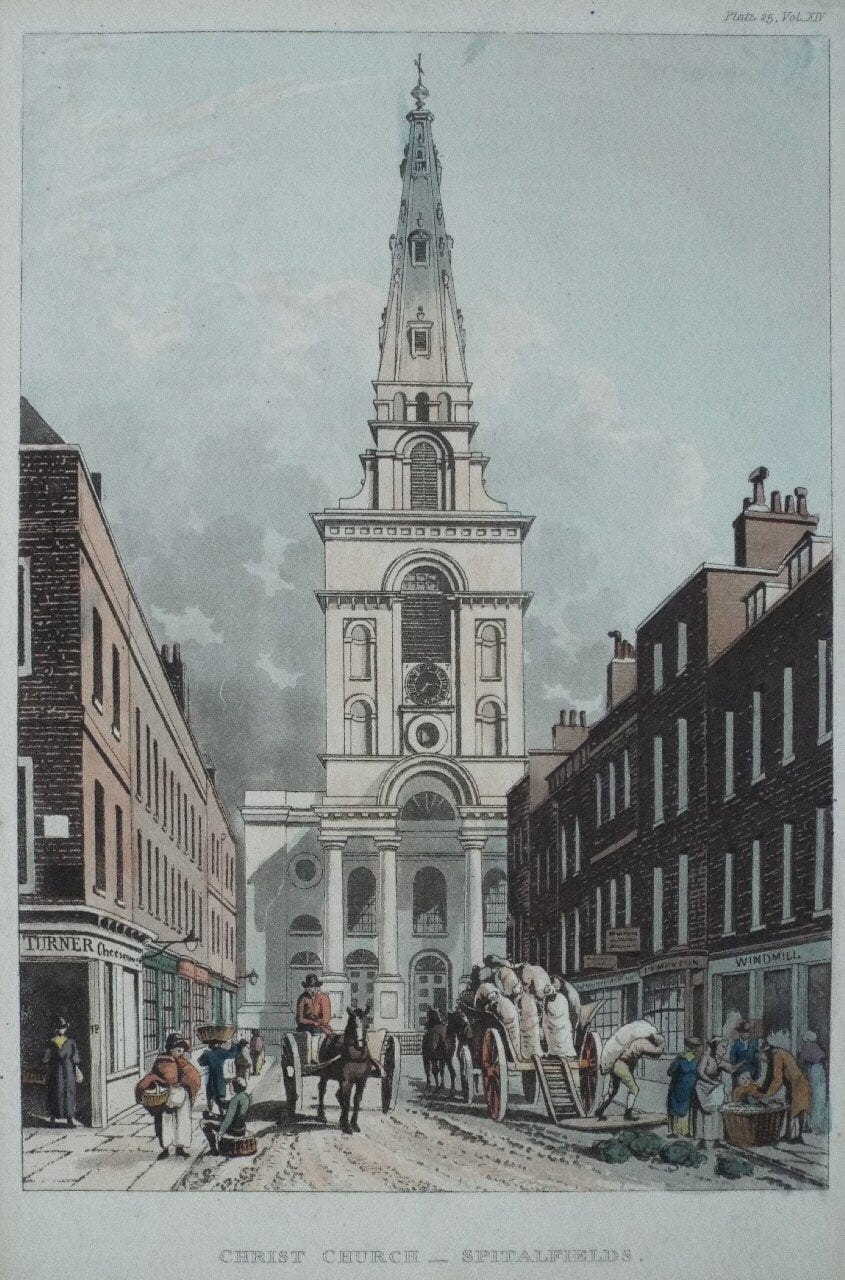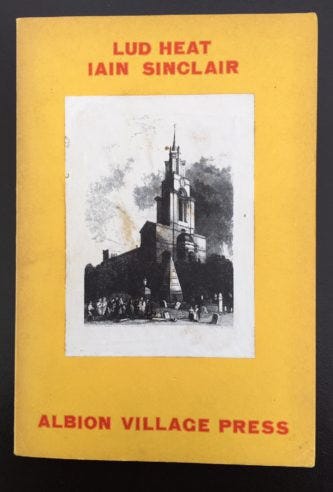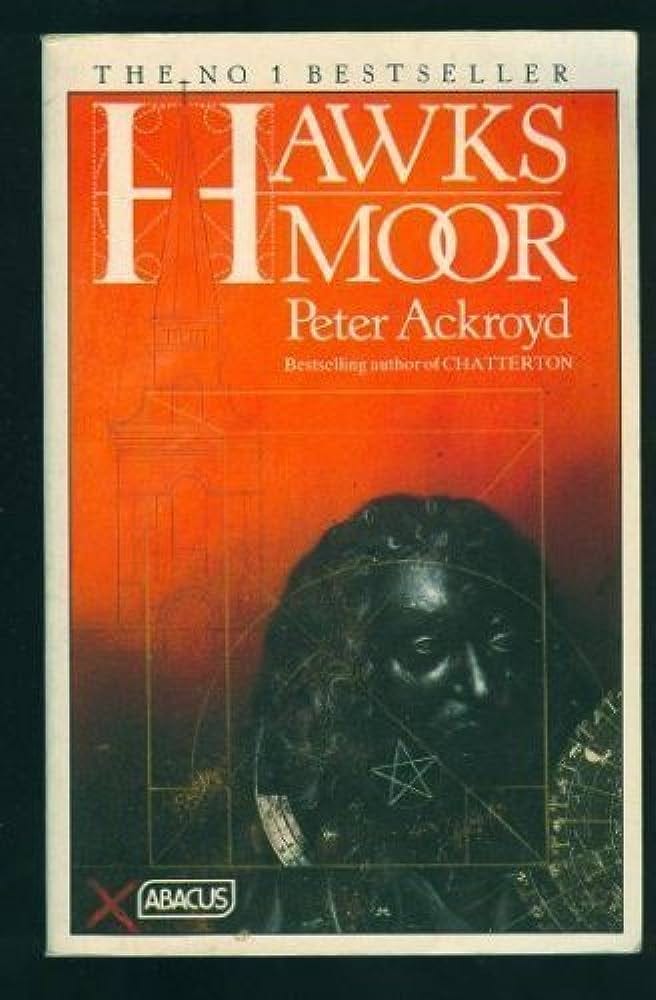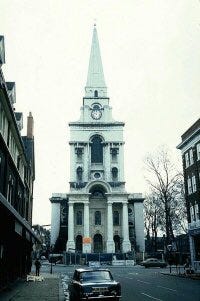#24 From the Twitter archives, part 9: Hawksmoor and the Queen Anne churches
Recalling a project of mine from the early 2010s.
1711, 2011
In 2011, inspired by Iain Sinclair and Peter Ackroyd, I undertook to visit all the surviving Queen Anne churches in London. These buildings date from the early 18th century, a period of extensive construction and reconstruction in the capital. The Great Fire of 1666 had destroyed a great many of the city’s places of worship. Thus in 1710, during the reign of Queen Anne, the New Churches in London and Westminster Act was passed; the following year saw the setting up of The Commission for Building Fifty New Churches. The target of fifty would not be met; ten new churches would be built and a two existing ones rebuilt. The Commission would also partly fund a number of other church rebuilding projects. I paid visits (often fleeting, due to the number of destinations on my itinery) to all these churches.
English Baroque
Most of the new churches were designed by Nicholas Hawksmoor (now a cult figure of course), with John James, Thomas Archer and James Gibbs also involved in the work. I was intrigued by the strangeness of Hawksmoor’s churches, and the idea the architect may have been involved in the occult.
Deep assignment
When the thought of visiting the Queen Anne churches first occurred to me in the summer of 2011, while I was in London for work-related reasons, I didn’t know the significance of the year 1711. A little research revealed the odd coincidence that it was precisely 300 years since the establishment of the Commission. At that point I thought that, despite the size of the task, I couldn’t very well not follow through on the idea—my mind had been made up for me. The first church I visited, later a favourite of mine, was St George in the East (pictured below).
A casualty of the Blitz
One Hawksmoor church none can now visit is St. John Horsleydown. Co-designed with John James in the 1720s, sadly it was badly damaged during the Blitz. Much later (the 1960s) it was determined that it should be demolished. Pevsner had considered its ”silly but loveable spire” a landmark.
Sacred geometry
Columns, obelisks, pyramids. Hawksmoor was inspired by various architectures of antiquity: Hellenic, Roman, Egyptian, and perhaps others. In 1975, in his first major publication, Lud Heat, Iain Sinclair floated the notion the renowned architect had sited his London churches so as to form an Egyptian hieroglyph. A stretch maybe, but Lud Heat being a poem, it’s not really a question of true or false.
Cycle of sacrifice
Peter Ackroyd acknowledges the debt his 1985 novel Hawksmoor owes to Sinclair. Here the 18th-century master of English Baroque is reimagined as Nicholas Dyer, a sinister figure who has an (involuntary) human sacrifice interred within the foundations of each of his churches.
‘Meanwhile’, in the present, Detective Inspector Nicholas Hawksmoor investigates present-day murders, each one seemingly committed in the vicinity of a Dyer church. The novel helped launch the Hawksmoor myth which, whether there’s any truth to it or not, is now a potent force at work in the city.
Scarlet tracings
Among the various mystical / metaphysical (or even pataphysical) ideas that have come to be promoted by psychogeographers like Sinclair and Ackroyd, one of the more thought-provoking is the notion that places influence the lives they touch in consistent ways. Darkness inhabits some places. Eg. Whitechapel, where the Ripper committed his murders. The Hawksmoor church of the district seems to me to possess a hostile aspect—something about the geometry of the building, and the silouette it cuts, suggests malignancy.










Have been meaning to write something about this. I loved the From Hell graphic novel. What do you think the Hawksmoor conspiracy theories reveal about 1970s/80s Britain?